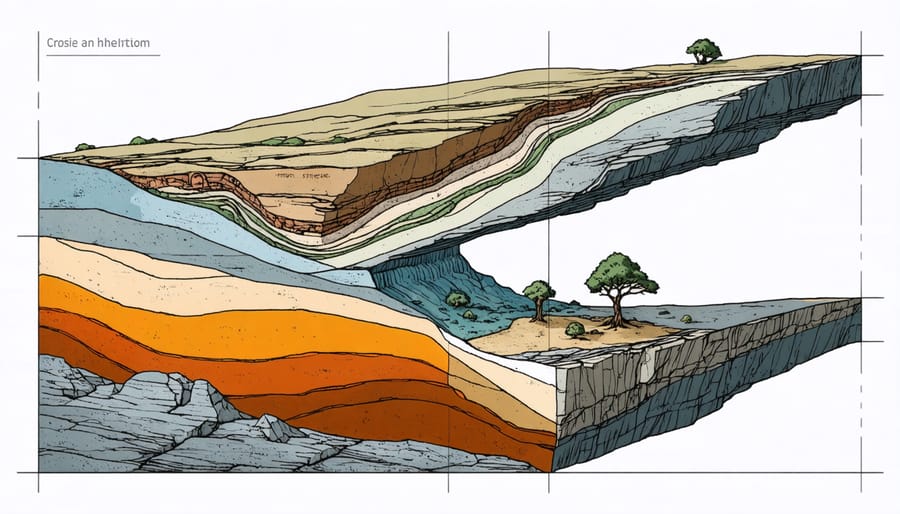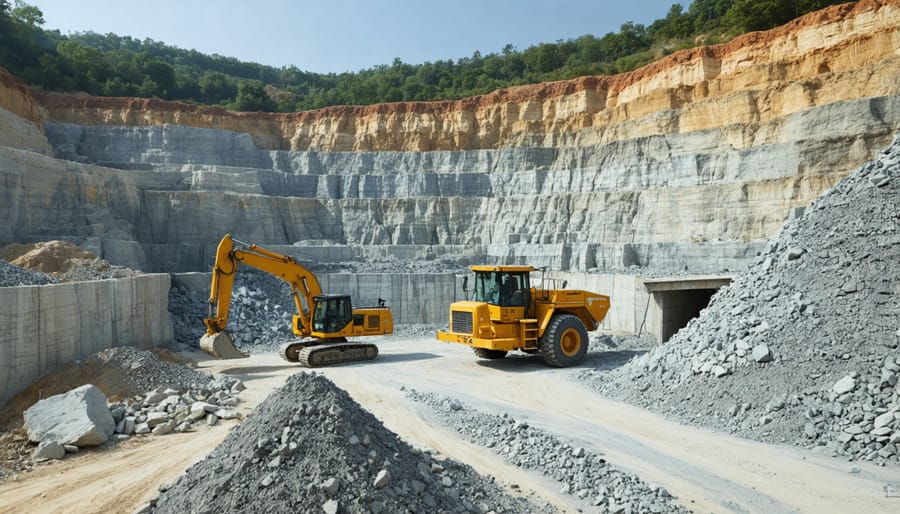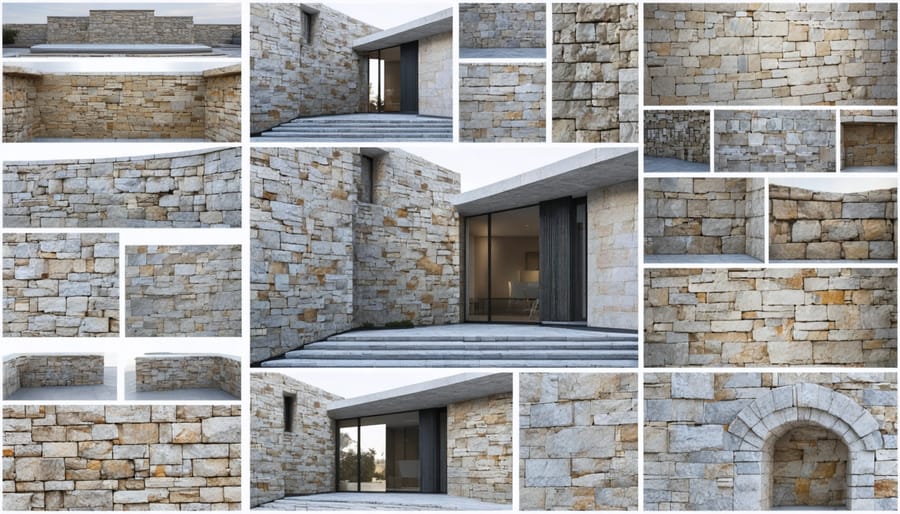From ancient monuments to modern architectural marvels, stone stands as one of Earth’s most fundamental and enduring natural resources. As a raw material formed through geological processes over millions of years, stone exemplifies the definition of a natural resource – materials occurring naturally in the environment that humans extract for practical use. Yet in today’s sustainability-focused world, questions arise about stone’s classification, renewability, and long-term viability as a building material.
This exploration into stone’s status as a natural resource comes at a crucial time when the construction industry faces mounting pressure to adopt environmentally responsible practices. Understanding stone’s unique position in the natural resource spectrum – from its formation process and extraction methods to its environmental impact and reusability – provides essential insights for architects, builders, and environmentally conscious consumers alike.
Through examining stone’s geological origins, current applications, and future sustainability prospects, we’ll uncover why this timeless material continues to play a vital role in human development while adapting to modern environmental considerations.
What Makes Stone a Natural Resource?
The Formation Process
Natural stone formation is a remarkable process that occurs through various geological mechanisms over millions of years. The diverse stones in nature form through three primary processes: igneous, sedimentary, and metamorphic. Igneous stones, like granite, emerge when molten rock cools and crystallizes. Sedimentary stones, including limestone and sandstone, develop as layers of sediment compress and cement together over time. Metamorphic stones, such as marble, form when existing rocks undergo intense heat and pressure, transforming their mineral structure. Each formation process creates unique characteristics, including color variations, patterns, and physical properties that make different stone types suitable for specific applications. Understanding these formation processes helps architects and designers select the most appropriate stone materials for their projects while appreciating the natural heritage each stone represents.

Natural Resource Classification
Stone is definitively classified as a natural resource because it forms through geological processes without human intervention. As a non-renewable mineral resource, stone exists in finite quantities within the Earth’s crust, created over millions of years through compression, heat, and chemical processes. It falls into the category of abiotic natural resources, meaning it’s derived from non-living sources in nature.
Like other mineral resources such as coal and metals, stone qualifies as a natural resource due to its natural occurrence, economic value, and utility in human activities. What sets stone apart is its widespread availability and relatively sustainable extraction methods compared to other mining operations. While stone is technically non-renewable, its vast global deposits make it an abundant resource.
This classification is significant because it influences how stone is regulated, extracted, and valued in construction and design applications. Understanding stone’s status as a natural resource helps inform sustainable quarrying practices and responsible use in building projects.
Stone’s Sustainability Profile
Environmental Impact
Quarrying and processing natural stone has environmental implications that require careful consideration. While stone is a sustainable building material, its extraction process can impact local ecosystems and landscapes. Modern quarrying operations employ advanced techniques to minimize environmental disruption, including controlled blasting methods and water recycling systems.
The primary environmental concerns include dust emissions, noise pollution, and changes to local water drainage patterns. However, many quarries implement comprehensive rehabilitation plans, restoring sites after extraction through revegetation and landscape contouring. Some abandoned quarries have been successfully transformed into wildlife habitats or recreational areas.
Processing stone requires energy for cutting and finishing, but technological advances have significantly improved efficiency. Many manufacturers now use closed-loop water systems, reducing water consumption and preventing contamination. Additionally, stone waste can be repurposed for aggregate, reducing landfill impact. When compared to manufactured materials, natural stone’s processing typically requires less energy and produces fewer carbon emissions over its lifecycle.
Resource Management
Sustainable stone extraction requires careful management to ensure this valuable natural resource remains available for future generations. Modern quarrying operations employ sophisticated techniques that minimize environmental impact while maximizing resource efficiency. These practices include selective extraction methods, waste reduction strategies, and land reclamation planning.
Quarry operators now utilize advanced cutting technologies that reduce stone waste and optimize block recovery. Water recycling systems are increasingly common in processing facilities, significantly reducing the industry’s water consumption. Additionally, many quarries implement progressive rehabilitation plans, restoring excavated areas while operations continue in other sections.
The stone industry has also embraced certification programs and sustainability standards that promote responsible resource management. These initiatives often require quarries to maintain detailed extraction records, implement environmental protection measures, and develop long-term sustainability plans.
Local regulations typically mandate environmental impact assessments and restoration commitments before quarrying permits are granted. This ensures that stone extraction balances economic benefits with environmental preservation. By following these practices, the stone industry works to maintain the delicate balance between meeting current demand and preserving resources for future use.


Modern Applications of Natural Stone
Construction Applications
The use of natural stone in construction has been a cornerstone of human architecture for millennia, offering both structural integrity and aesthetic appeal. From ancient monuments to modern buildings, stone continues to be a premier building material across diverse applications.
In structural applications, granite, limestone, and sandstone are frequently used for foundations, load-bearing walls, and column construction due to their exceptional compressive strength and durability. These materials provide natural insulation properties and weather resistance, making them ideal for exterior applications in various climates.
Decoratively, marble, slate, and travertine transform spaces through their unique patterns and textures. These stones are popular choices for flooring, wall cladding, countertops, and architectural details. Each stone type brings its distinct character to projects, from the luxurious veining of marble to the rustic appeal of slate.
Modern construction techniques have expanded stone’s versatility through innovative applications like thin stone veneers, which offer the aesthetic benefits of natural stone with reduced weight and installation costs. Sustainable building practices increasingly incorporate locally sourced stone to minimize transportation impacts and support regional economies.
The durability of stone construction materials often results in buildings that last for generations, making it a cost-effective choice despite higher initial investments. This longevity, combined with minimal maintenance requirements, demonstrates stone’s value as both a practical and sustainable building resource.
Interior Design Elements
Natural stone brings timeless elegance and sophistication to interior spaces, serving as both a functional and aesthetic element. From luxurious marble countertops to rustic slate flooring, stone materials create striking focal points while offering exceptional durability. Popular applications include kitchen countertops, bathroom vanities, fireplace surrounds, and accent walls.
Different stone varieties provide unique characteristics for interior design. Granite offers durability and varied patterns, making it ideal for high-traffic areas. Marble delivers classic beauty with its distinctive veining, though it requires more maintenance. Limestone and travertine provide warm, earthy tones perfect for creating inviting spaces, while slate’s natural texture adds dramatic visual interest to walls and floors.
Interior designers often combine different stone finishes – polished, honed, or textured – to create visual depth and interest. The versatility of natural stone allows for seamless integration with various design styles, from contemporary minimalism to traditional elegance. When properly sealed and maintained, stone elements can retain their beauty for generations, making them a valuable investment in interior design.
Landscape and Hardscape Uses
Stone plays a pivotal role in outdoor design, offering both aesthetic appeal and functional durability. In landscaping, natural stone creates stunning walkways, garden paths, and stepping stones that seamlessly blend with the environment. Retaining walls built from stone not only prevent soil erosion but also add architectural interest to sloped terrain.
Popular hardscape applications include stone patios, which provide durable entertaining spaces while complementing natural surroundings. Stone veneer transforms plain exterior walls into striking architectural features, while boulder placement creates dramatic focal points in garden designs. Water features crafted from natural stone, such as fountains and waterfalls, introduce soothing elements to outdoor spaces.
Driveways and courtyards utilizing stone pavers or cobblestones offer superior durability compared to conventional materials, while adding timeless elegance to property entrances. Stone fire pits and outdoor kitchen areas create functional gathering spaces that withstand the elements. For borders and edging, stone provides clean lines that define garden beds and lawn areas while requiring minimal maintenance over time.
These applications demonstrate stone’s versatility as a natural resource in creating lasting, beautiful outdoor spaces that enhance property value and enjoyment.
The Future of Stone as a Resource
The stone industry is undergoing significant transformation as sustainability becomes increasingly crucial. Innovations in quarrying techniques now minimize environmental impact through precision cutting and waste reduction. Advanced recycling methods allow for the repurposing of stone waste into aggregate materials, pavers, and decorative elements, ensuring maximum resource utilization.
Digital fabrication technologies, including CNC machines and 3D printing, are revolutionizing stone processing. These innovations reduce waste while enabling complex designs that were previously impossible, making stone more versatile and cost-effective. Sustainable certification programs are emerging to authenticate environmentally responsible stone sourcing and processing practices.
Looking ahead, research focuses on developing hybrid materials that combine stone’s durability with enhanced performance characteristics. Scientists are exploring ways to incorporate stone waste into eco-friendly concrete alternatives and investigating methods to strengthen natural stone without compromising its environmental benefits.
The industry is also embracing circular economy principles, with quarries implementing rehabilitation programs and manufacturers developing closed-loop production systems. Smart quarrying technologies help optimize extraction patterns and reduce energy consumption, while improved inventory management systems ensure more efficient resource utilization.
These developments suggest a promising future where stone remains a valuable construction material while meeting modern sustainability requirements. As technology advances, we can expect even more innovative solutions that balance resource preservation with meeting growing global demand for natural stone products.
Stone stands as one of Earth’s most valuable natural resources, offering a perfect balance of durability, beauty, and sustainability. As we’ve explored, its classification as a natural resource is well-deserved, given its abundance, renewability through geological processes, and minimal environmental impact when properly quarried. Looking ahead, the stone industry continues to evolve with more efficient extraction methods and improved recycling practices, ensuring its availability for future generations. The growing emphasis on sustainable building materials has only strengthened stone’s position as a preferred choice for eco-conscious construction and design. By choosing natural stone, we not only honor Earth’s geological heritage but also invest in a material that combines timeless aesthetics with environmental responsibility. Its continued use in modern applications, from architectural landmarks to interior design, demonstrates that stone remains as relevant today as it was thousands of years ago.










